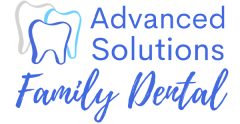Teeth are crucial in maintaining facial structure, supporting lips, cheeks, and overall aesthetics. However, concerns arise regarding potential facial changes after tooth extraction. This worry stems from the possibility of reduced bone density and volume in the jaw area following extraction, leading to alterations in facial contours and appearance.
Such changes may include sagging of the cheeks, loss of definition in the jawline, and a sunken appearance in the affected area. Understanding these concerns underscores the importance of considering alternatives to extraction and prioritizing measures to preserve dental and facial harmony.
The Role of Teeth in Facial Structure
1. Anchorage and Support: Teeth play a vital role in facial structure by anchoring into the jawbone, providing essential support for surrounding tissues. This anchorage helps maintain the jawbone’s integrity and prevents facial changes after tooth extraction.
2. Bone Stimulation: Tooth roots stimulate the surrounding jawbone, promoting bone density and strength. This stimulation is crucial for preserving the structural integrity of the face, minimizing the risk of facial changes post-extraction.
3. Upper Jaw Support: Teeth in the upper jaw (maxilla) support crucial facial features such as the nose and eye socket. Loss of teeth in this area can contribute to facial changes after extraction, affecting overall facial aesthetics.
4. Alignment and Contour: The alignment and positioning of teeth influence the contour and shape of the face. Changes in tooth structure or tooth loss can lead to alterations in facial appearance, emphasizing the importance of avoiding unnecessary extractions.
5. Prevention of Sagging: Properly aligned teeth help support the lips and cheeks, preventing sagging and maintaining youthful facial contours. Concerns about facial changes after tooth extraction highlight the significance of preserving natural teeth whenever possible to maintain overall facial harmony.
Can Tooth Extraction Cause Facial Changes?
Facial changes after tooth extraction can occur due to the loss of teeth’ support. When a tooth is extracted, the surrounding jawbone may gradually deteriorate, reducing bone density and volume. This can result in alterations to the facial structure, including sagging of the cheeks, loss of definition in the jawline, and a sunken appearance in the affected area.
Additionally, changes in facial contours may occur if multiple teeth are extracted, further impacting overall aesthetics. Thus, while tooth extraction may be necessary in some cases, it’s essential to consider its potential long-term effects on facial harmony.
Potential Facial Changes After Extraction
1. Bone Resorption: The jawbone may undergo resorption following tooth extraction, gradually losing volume and density. This can decrease facial support and contribute to a sunken or hollow appearance in the affected area.
2. Altered Facial Contours: Loss of teeth can cause changes in the alignment and positioning of surrounding structures, affecting facial contours. This may result in a less defined jawline or cheekbones, impacting overall facial aesthetics.
3. Sagging of Soft Tissues: Without the support provided by teeth, soft tissues such as the cheeks and lips may begin to sag or droop, altering facial appearance and contributing to a prematurely aged look.
4. Shift in Dental Occlusion: Tooth extraction can disrupt the balance of the bite, leading to changes in dental occlusion. This shift can affect the distribution of forces during chewing and may further contribute to changes in facial structure over time.
5. Psychological Impact: Beyond the physical changes, alterations in facial appearance due to tooth extraction can have psychological effects, impacting self-esteem and confidence. Understanding and addressing these potential changes is essential in comprehensive dental treatment planning.
Factors Affecting Facial Changes
1. Location of Extraction: The position of the extracted tooth within the dental arch can influence the extent of facial changes. Teeth in the anterior region (front teeth) may have a more noticeable impact on facial aesthetics than those in the posterior region.
2. Number of Teeth Extracted: Extracting multiple teeth can lead to more significant changes in facial structure compared to single-tooth extraction. Losing multiple teeth can result in more significant bone resorption and soft tissue changes, exacerbating facial changes after tooth extraction.
3. Bone Density and Quality: Individual bone density and quality variations can affect how the jawbone responds to tooth extraction. Poor bone density may lead to more pronounced facial changes as the bone undergoes resorption faster.
4. Pre-existing Dental Conditions: Patients with pre-existing dental conditions, such as periodontal disease or dental malocclusion, may experience different facial changes after tooth extraction. These conditions can influence bone health and soft tissue support, impacting post-extraction facial aesthetics.
5. Post-Extraction Treatment: The type and timing of post-extraction treatments, such as dental implants or bone grafting, can influence facial changes. Properly planned and executed post-extraction procedures can help mitigate potential facial changes associated with tooth extraction.
Wrap Up!
In conclusion, while concerns about facial changes are valid, it’s essential to remember that tooth extraction is generally a safe procedure, and any resulting facial changes are often minimal. At Advanced Solutions Family Dental, our team prioritizes patient comfort and satisfaction, offering personalized advice and treatment options tailored to individual needs.
Don’t hesitate to consult us for expert guidance on preserving dental and facial harmony. Take the first step towards a confident smile today! Schedule your consultation with Advanced Solutions Family Dental and embrace a brighter, more beautiful future.

